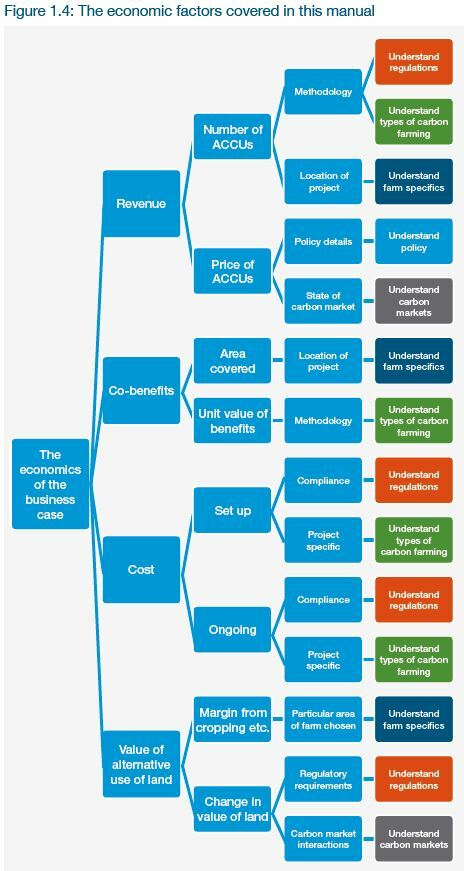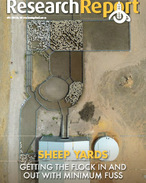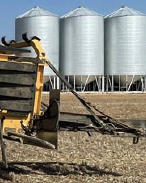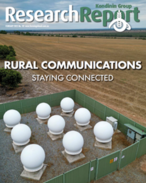Both the benefits and costs of participating in the ERF depend on a range of factors. Figure 1.4 shows the economic factors that this manual covers. At the highest level, the economic business case for ERF participation depends on the relationship between:
-
the co-benefits of the project (benefits in addition to the greenhouse gas emissions avoided or sequestered)
-
project revenue (the value of sales of the ACCUs formally generated by the project)
-
project costs, which need to include the value of alternative uses of the land opportunity cost.
Each of these elements has many more details underlying it. Figure 1.4 illustrates how they work, and each is discussed below in more detail. In addition to these broad elements, a business case must also take into account:
-
the timing of revenue, co-benefits and costs
-
the risks and uncertainties associated with each of the revenues, co-benefits and costs.
|
|
Explore the full Workshop Manual: The business case for carbon farming: improving your farm’s sustainability (January 2021)
Read the report
RESEARCH REPORTS
1. Introduction: background to the business case
This chapter lays out the basic background and groundwork of the manual
RESEARCH REPORTS
1.2 Being clear about the reasons for participating
Introduction: background to the business case
RESEARCH REPORTS
1.4 Working through the business case for carbon farming
Introduction: background to the business case
RESEARCH REPORTS
1.5 Factors determining project economics
Introduction: background to the business case
RESEARCH REPORTS
1.8 Important features of the business case
Introduction: background to the business case
RESEARCH REPORTS
2. How carbon is farmed under the ERF
This chapter considers in detail the activities that constitute carbon farming
RESEARCH REPORTS
2.5 Carbon farming under the Emissions Reduction Fund
How carbon is farmed under the ERF
RESEARCH REPORTS
3. The policy context and the price of ACCUs
This chapter takes a broad look at the policy context for carbon farming























